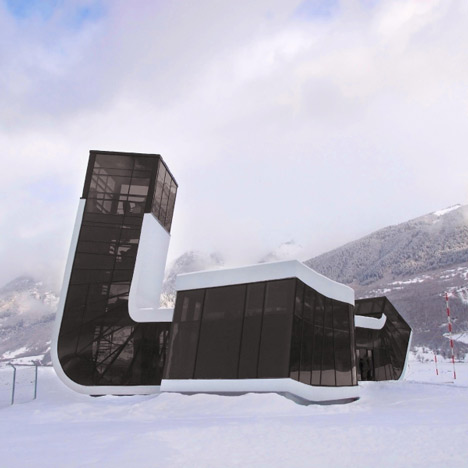
The architect known as J. Mayer H. has recently completed a building for an airport in Mestia, Georgia. The project features what appears to be a simple long, rectilinear form which has been has been bent at multiple points. Mayer has executed the design such that one can easily separate the "primitive" form and materiality from the 'bent' gestures, i.e. the distortions of that primitive form. To elaborate, the building appears to be based on classic modernist conception of an idealized space: the establishment of the floor plane and the ceiling plane with the other necessities of structure and envelope being visually minimal. Steel piloti and aluminum curtain glazing, stemming from that old ideal, have become commonly recognizable through repetition over the latter 20th century as common and, perhaps, vernacular (though not necessarily inelegant).
The primitive form, by which I mean the materially pragmatic result of the theoretical ideal that has developed over half a century of vulgar use, is thus contradicted. Through the designer's warping and bending of, say, the curtain wall system, the basic efficiency by which the system is legitimized is eliminated by the need for costly custom fabrication. Is there an obscure logic or philosophical agenda at play, or is this some sort of cheap trick?
The mass, which in its primitive form is a statement of clarity, is strikingly difficult to understand. Seeing it at first, one almost perceives a linear form. There are, in fact, three ends. This effect is partly achieved by the elimination of corners. The three prongs of the building are joined at a center in such a way that one prong blends into the adjacent one seamlessly without any inside-corner condition. Through clever detailing, the box-like primitive sudden has three ends (one of which rises into the air).
Source: Dezeen
No comments:
Post a Comment